Optimizing Pest Control with Data Analytics
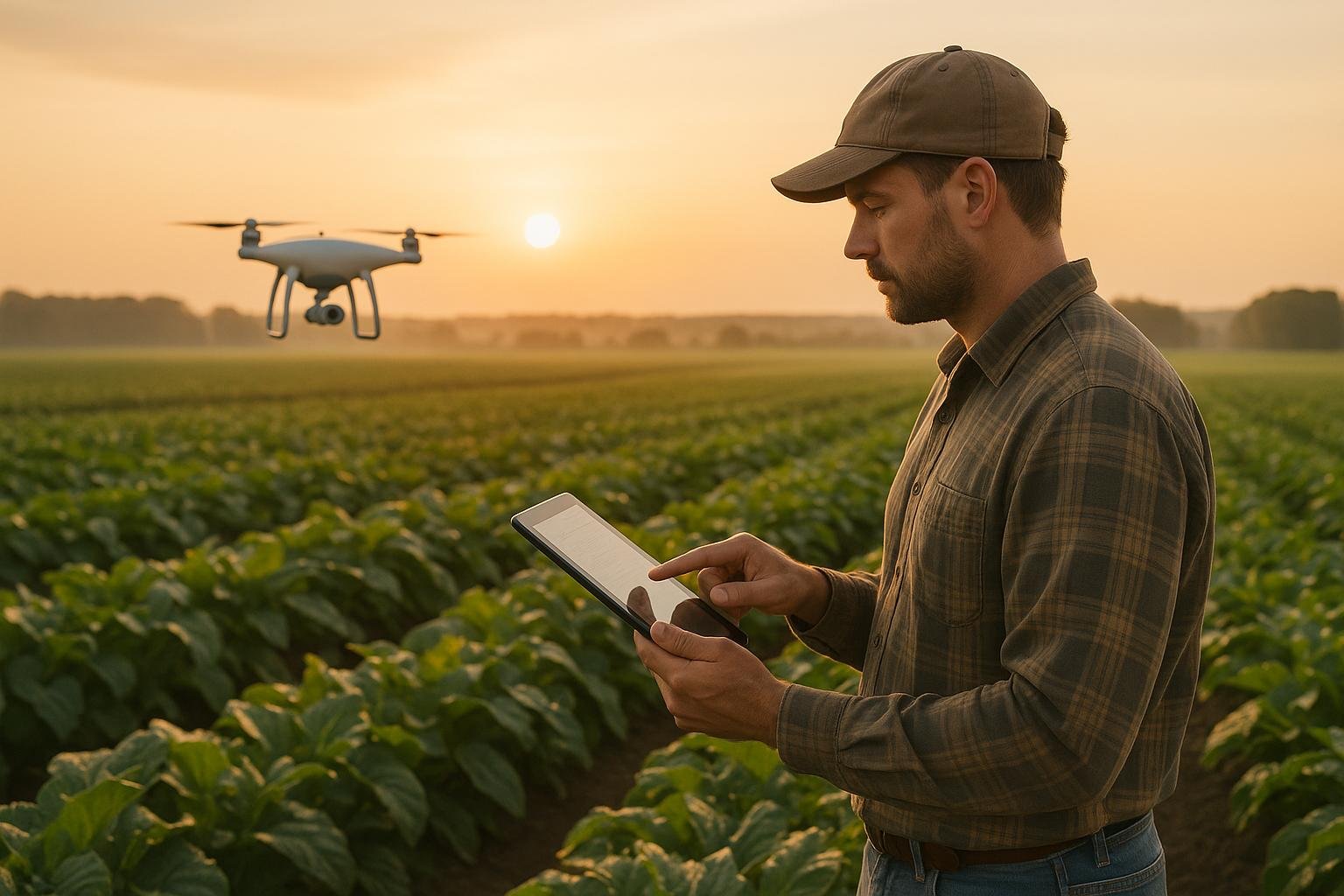
Pests destroy crops and gardens, costing billions annually. Old methods waste chemicals, harm ecosystems, and fail to prevent infestations. Data analytics offers a smarter way forward:
- Predictive Analytics: Uses data to forecast pest outbreaks, enabling timely action.
- IoT and AI Tools: Real-time monitoring and machine learning refine pest control strategies.
- Precision Techniques: Drones, GPS, and sensors target pests directly, cutting chemical use by up to 90%.
- High-Resolution Data: Improves decision-making, reduces waste, and saves resources.
- Measurable Impact: Metrics like yield preservation and chemical efficiency help optimize results.
These advancements save money, protect crops, and reduce risks to health and the environment. Farmers and gardeners can now rely on data-driven solutions for better pest management.
Precise , Immediate AI Pest Management

Data Collection: Building the Foundation for Better Pest Control
Effective pest control starts with gathering accurate information about pest activity and the surrounding environment. Today’s approaches combine age-old methods with advanced technology to create a well-rounded strategy for managing pests. This blend of tools sets the stage for precise and proactive pest control.
Main Data Sources for Pest Monitoring
Modern pest monitoring relies on multiple data sources to gain a full understanding of pest activity. Environmental sensors play a key role, measuring factors like temperature, humidity, barometric pressure, light levels, gas concentrations, and soil moisture [5]. These measurements help identify conditions that can lead to pest outbreaks.
Satellite imagery and drones provide a larger perspective, allowing for the early detection of pest damage across vast agricultural areas - sometimes before it’s even noticeable to the naked eye [6]. Together, these technologies complement sensor data to create a complete picture of pest behavior.
Traditional monitoring tools are still essential. A variety of traps, both conventional and smart, remain critical for capturing specific types of pests [2]. Among these, smart traps represent a leap forward. Companies like Trapview offer AI-powered pheromone traps that analyze pest activity in real time and even predict future trends [3][6]. These traps work alongside farm management software and mobile apps, which help farmers organize and interpret data for better pest identification and control [6].
Real-Time Tracking of Pest Activity
Real-time monitoring has transformed pest control, shifting it from a reactive approach to a proactive one. IoT devices and smart sensors continuously track pest activity and send alerts as soon as a problem arises [8]. This rapid notification system allows for quicker responses, reducing the need for chemical treatments and limiting potential crop damage [9].
Automated traps equipped with cameras and sensors provide constant updates on pest populations, alerting farmers when certain thresholds are reached [6]. Remote cameras with motion sensors further enhance this process by sending live images and videos to central dashboards for ongoing monitoring [9].
More advanced technologies, like near-infrared sensors, are redefining pest detection. These sensors analyze backscattered light to automate insect monitoring. In one field test, a single sensor recorded about 19 times more insect observations than traditional yellow water traps, with a Spearman's rank correlation coefficient of 0.61 (p-value = 0.0065) [7]. By 2021, a cloud database had compiled over 18 million insect observations from 119 similar monitoring units deployed in various locations [7].
Why High-Resolution Data Matters
The quality of data collected is just as important as the quantity. High-resolution data can significantly improve pest management decisions, especially in a country as geographically diverse as the United States. From the humid Southeast to the arid Southwest, pest behavior varies widely, and generic, low-resolution data often misses these critical differences.
For example, high-resolution data has been shown to improve species risk assessments, increasing safety evaluations from less than 5% to nearly 50% [10]. In the contiguous U.S., 48% of species were deemed safe using high-resolution data, compared to only 20% with lower-resolution data [10].
In California, township-level data (approximately 36 square miles) proved far more effective than broader county-level data. It excluded 33% of terrestrial plants and 51% of their critical habitats from requiring formal consultation, whereas coarser data excluded none [11]. This precision not only enables more targeted pest control but also reduces unnecessary treatments. Additionally, high-resolution data speeds up pesticide reviews, ensuring products are evaluated more efficiently [11].
For farmers and gardeners dealing with varied microclimates, high-resolution data is indispensable. It captures the nuances of pest behavior that can differ dramatically between regions, helping to fine-tune pest control strategies.
"Since so much of pest management is focused on prevention, data can provide quality control information." - James Campbell, USDA ARS Stored Product Insect and Engineering Research Unit Research Leader [12]
Modern monitoring systems are equipped with specialized sensors like low-power cameras, thermal sensors, fluorescence image sensors, acoustic sensors, and gas sensors [4]. Each type of sensor collects unique data, creating a robust network for pest and environmental monitoring.
Using Predictive Analytics for Early Pest Management
Predictive analytics is changing the game in pest control, moving it from a reactive approach to a proactive one. Instead of waiting for visible damage, this technology identifies potential threats weeks or even months in advance. By transforming raw data into actionable insights, predictive models allow gardeners and landscapers to address issues before they escalate. This approach builds on the earlier discussion of real-time data collection, adding another layer of prevention to pest management.
How Predictive Models Work in Pest Control
Predictive models in pest control operate similarly to advanced weather forecasting systems. They analyze large datasets from multiple sources to uncover patterns that signal the likelihood of pest infestations. Machine learning algorithms process historical pest data alongside environmental factors like temperature, humidity, soil moisture, and weather trends. Technologies like hyperspectral and multispectral imaging also play a role, detecting early signs of pest-induced stress in plants [14].
For example, specific temperature and humidity combinations can create ideal breeding conditions for pests like aphids or spider mites. By processing real-time sensor data, AI systems can spot these conditions early, offering a clear forecast of potential pest problems [14].
One remarkable example comes from Tamil Nadu Agricultural University (TNAU), which developed an Android app using Deep Convolutional Neural Networks. This app identifies fall armyworm infestations in maize with 93.47% validation accuracy and 98.47% training accuracy, enabling early detection and timely action [13].
In addition, machine learning models can predict corn yields with over 90% accuracy up to six weeks before harvest [15]. AI-powered cameras and microphones, combined with deep learning algorithms, can detect insects in cotton fields with accuracy rates ranging from 70% to 98% [14].
Benefits of Predicting Pest Infestations
The advantages of predictive analytics are both practical and substantial. One of the most notable benefits is the reduction in pesticide use. For instance, Blue River Technology's smart sprayer has helped farmers cut herbicide use by up to 90% compared to traditional methods [16]. Early detection also translates to significant cost savings. With pests and diseases causing over $220 billion in global crop losses annually, addressing issues early can make a real difference [14].
Real-world applications underscore these benefits. Semios, a precision farming platform partnered with Google, used its AI-driven system to reduce a moth population by 1.5 billion insects, leading to increased almond production [16]. Predictive soil models have also shown the potential to reduce irrigation needs by 20–30% [15], while targeted pest control minimizes labor costs and wear on equipment.
Beyond cost and efficiency, predictive systems contribute to environmental protection. By applying pesticides only when necessary, they help preserve beneficial insects, maintain soil health, and protect water quality. These systems also empower gardeners and landscapers with data-driven insights, replacing guesswork with precise recommendations. This approach not only prevents issues but also offers a competitive advantage by enabling more effective maintenance programs.
As the pest control industry grows - expected to reach $42.5 billion by 2032 [17] - predictive technologies are becoming a cornerstone of modern agriculture and gardening, driving smarter, more sustainable practices.
sbb-itb-4d6a8dd
🚀 Ready to Reinvent Your Garden?
Join thousands of homeowners who have transformed their gardens using our AI design tool. Upload one photo to explore endless possibilities.
Get your AI garden designs →Improving Pest Control Decisions with Data Analytics
Data analytics is transforming pest control by enabling precise, science-backed strategies. Modern tools process information from diverse sources to provide targeted recommendations, helping farmers and gardeners save money, protect crops, and minimize environmental impact. This shift from reactive to proactive pest management is reshaping how agricultural challenges are tackled.
Automated Pest Control Recommendations
AI-powered systems are at the forefront of modern pest management, analyzing massive datasets to deliver actionable solutions. These systems integrate information from satellites, drones, sensors, weather reports, and pest life cycles to suggest precise treatments [19].
Take FarmSense, for example. Its pest-monitoring platform collects real-time data from field sensors, capturing insect activity and environmental conditions. This data is then processed in the cloud using AI, which tailors recommendations to each grower’s specific needs. For nut orchards, the system can pinpoint the exact timing for spraying against navel orangeworms, reducing unnecessary pesticide use [16].
AI systems now achieve over 90% accuracy in identifying crop threats [18]. This precision ensures interventions occur only when pest populations or environmental triggers meet critical thresholds, avoiding wasteful treatments and protecting beneficial insects [21].
Another standout is Blue River Technology’s smart sprayer. Using image-based pattern recognition, it identifies crops and weeds in real time, applying herbicide only where needed. This targeted method has helped farmers cut herbicide use by as much as 90% compared to traditional broadcast spraying [16].
These systems also promote sustainable practices by analyzing crop health, pest patterns, and environmental conditions. Their recommendations often integrate natural pest control methods, reducing pesticide use while maintaining effectiveness. The result? A flexible, real-time approach to pest management.
Tracking and Adjusting Strategies in Real Time
Automated recommendations are just the beginning. Real-time monitoring ensures pest control strategies can adapt as conditions change, keeping interventions effective and efficient.
Crop Analytica offers a compelling example. During the 2024 growing season, its drone imagery detected early signs of chlorosis in a crop cluster. Initial assessments suggested a nutrient deficiency, but further analysis using red-edge reflectance revealed a fungal outbreak. Within 48 hours, the system alerted technicians, who confirmed leaf rust and applied targeted fungicide treatments. This quick response limited yield loss to under 5% and kept the region’s export schedule on track [22].
"At Crop Analytica, we believe that pest control should be an ongoing, integrated effort rather than a singular action. Our platform combines agro-climatic intelligence, technician-led scouting, and real-time dashboards to promote early detection and focused responses, allowing farms to minimize losses, comply with regulations, and ensure consistent crop quality across regions." [22]
These systems continuously monitor pest populations, environmental factors, and treatment outcomes. If a treatment underperforms or conditions shift, recommendations are automatically updated. This dynamic approach not only improves effectiveness but also supports environmentally friendly practices. For instance, biological control methods bolstered by data analytics have reduced pesticide use by up to 80% compared to traditional methods [18].
Measuring the Impact of Data-Driven Pest Control
After implementing targeted actions, it’s crucial to measure their success. Data-driven pest control relies on key performance indicators (KPIs) to evaluate economic and environmental benefits. These metrics help growers refine their strategies and optimize resource use [22].
Some essential KPIs include:
- Yield Preservation Index (YPI): Tracks crop yield protection, with a YPI of 0.90 or higher indicating minimal loss [22].
- Pest Pressure Reduction Rate (PPRR): Measures how quickly pest populations decrease, with a target of 50% reduction within two weeks [22].
- Chemical Use Efficiency (CUE): Assesses the effectiveness of pesticide applications.
- Time to First Response (TFR): Evaluates how quickly issues are identified and addressed.
- Return on Intervention (ROI): Calculates the financial benefits of pest control efforts relative to their costs [22].
| KPI | Target Performance | Business Impact |
|---|---|---|
| Yield Preservation Index (YPI) | 0.90 or higher | Less than 10% crop loss to pests |
| Pest Pressure Reduction Rate (PPRR) | 50% or higher within 2 weeks | Rapid pest population control |
| Chemical Use Efficiency (CUE) | Minimize applications while maintaining effectiveness | Reduced costs and environmental impact |
| Time to First Response (TFR) | Under 48 hours | Prevents pest establishment and spread |
| Return on Intervention (ROI) | Positive financial return | Profitable pest management |
The stakes are high. According to the Food and Agriculture Organization (FAO), pests cause 20–40% of global crop losses annually, costing the economy $290 billion [20]. Data-driven pest control directly tackles this issue by enabling precise, effective interventions. These KPIs validate the impact of approaches like those described.
"Precision methods powered by real-time monitoring and intelligent platforms like Crop Analytica are the future of pest control. They improve productivity, reduce waste, and support sustainability from the ground up." [22]
By tracking these metrics over time, growers can identify the most effective strategies for their unique conditions and refine their approaches. This ongoing optimization ensures pest control programs remain efficient, delivering better results with fewer resources.
The growing adoption of these methods is evident in the pest control industry’s expansion. In 2024, the U.S. pest control market was valued at over $24.2 billion, reflecting the increasing recognition of precision pest management’s benefits [23].
Conclusion: The Future of AI and Data in Pest Management
Data analytics is revolutionizing pest control, shifting it from a reactive approach to one that's proactive and efficient. By combining AI with real-time monitoring, the industry is seeing tangible improvements that benefit both agricultural practices and the environment.
The Growing Role of AI in Pest Control
AI is transforming pest management by delivering precision and speed that were previously unattainable. Research shows that AI-powered monitoring systems can improve detection accuracy by up to 40% [27]. This level of accuracy directly translates into better results for farmers and gardeners.
"AI is reshaping the pest control industry by presenting innovative solutions to longstanding challenges. The potential benefits of AI in pest control are substantial, ranging from improved precision and real-time monitoring to improved decision-making and increased sustainability."
– Avalon Services [24]
The market reflects this shift. Over 60% of pest control companies now employ tech-driven, sustainable methods [27]. These advancements help reduce pesticide use by enabling early detection, which prevents the spread of pests and minimizes crop damage. A great example is JP McHale Pest Management's use of SMART Technology to enhance their services [28].
"We focus on innovative technology, scientific research, and organic, environmentally friendly pest management processes to deliver service excellence. Our goal is to prevent issues before they arise, reducing pesticide use and enhancing client safety."
– Jim McHale, JP McHale Pest Management [28]
Such innovations are paving the way for integrated systems that make pest and garden management more streamlined and effective.
Platforms Using Data Analytics for Garden Management
AI-powered tools are also making their way into everyday gardening. New platforms are helping home gardeners tackle pest issues with ease. For instance, AI-driven apps can diagnose plant problems and offer tailored solutions [25]. Devices like Tertill, a solar-powered garden robot, automate tasks like weed elimination, showcasing how AI can simplify routine maintenance [25].
AIGardenPlanner is another standout. This platform uses AI to analyze garden photos and provide personalized recommendations based on location, climate, and user preferences. By matching plants to their ideal conditions and offering pest-resistant strategies, it helps gardeners naturally reduce pest problems. Detailed guides further support users with plant-specific pest management tips tailored to their local environment.
These tools are making professional-grade pest management accessible to home gardeners, emphasizing mobile-first solutions and advanced data analytics [26].
Key Takeaways for Gardeners and Landscapers
The innovations discussed here are shaping modern pest management. For gardeners and landscapers aiming to improve their methods, here are some practical insights:
- Adopt technology as an advantage: AI-powered detection, eco-friendly treatments, and smart monitoring systems are defining the future of pest control [1].
- Select providers that embrace cutting-edge technology: Partner with companies committed to staying ahead with AI and emerging tools [24].
- Use mobile apps for quick solutions: Apps that diagnose pest issues through photos are game-changers for gardeners [25].
- Prioritize prevention over reaction: Data-driven tools and predictive analytics allow for early intervention, reducing costs and environmental harm [1].
The shift toward AI and data-driven pest control is already delivering results. By adopting these tools and strategies, gardeners and landscapers can achieve better outcomes while contributing to a healthier environment.
FAQs
How does predictive analytics make pest control more effective than traditional methods?
Predictive analytics is changing the game in pest control by using data to predict pest activity before it escalates into a full-blown problem. With this forward-thinking approach, pest control efforts can be more timely and accurate, cutting down on the need for widespread chemical treatments and helping to lessen environmental harm.
Traditional pest control methods tend to respond only after an infestation has already taken hold. In contrast, predictive analytics identifies patterns and trends to anticipate outbreaks ahead of time. This not only boosts efficiency but also promotes smarter pest management by focusing on specific areas and limiting the overuse of pesticides.
How do IoT devices and AI help make pest control more eco-friendly?
IoT devices and AI are changing the game in pest control, making it smarter and less harmful to the environment. With real-time monitoring of pest activity and targeted actions, these technologies cut down on the need for broad pesticide applications. This means fewer chemicals in the environment and better protection for ecosystems.
AI takes it a step further with predictive analytics and constant surveillance. It can spot pest problems early and suggest efficient, eco-friendly solutions. The result? A reduced environmental footprint and healthier gardens, landscapes, and nearby areas.
How does high-resolution data improve pest control in diverse landscapes?
High-resolution data is a game changer in pest control. By pinpointing specific pest hotspots and analyzing local landscape features, it helps identify natural factors that assist in managing pests. This means pest control efforts can be more precise, cutting down on unnecessary pesticide use and making better use of resources, especially in areas with diverse environmental conditions.
Another major advantage is its role in predictive analytics. By examining elements like weather patterns and landscape structures, high-resolution data can anticipate potential pest outbreaks. This forward-thinking method allows for pest control strategies that are not only effective but also environmentally conscious - particularly important in regions where customized approaches are a must.
Related posts
Related Articles
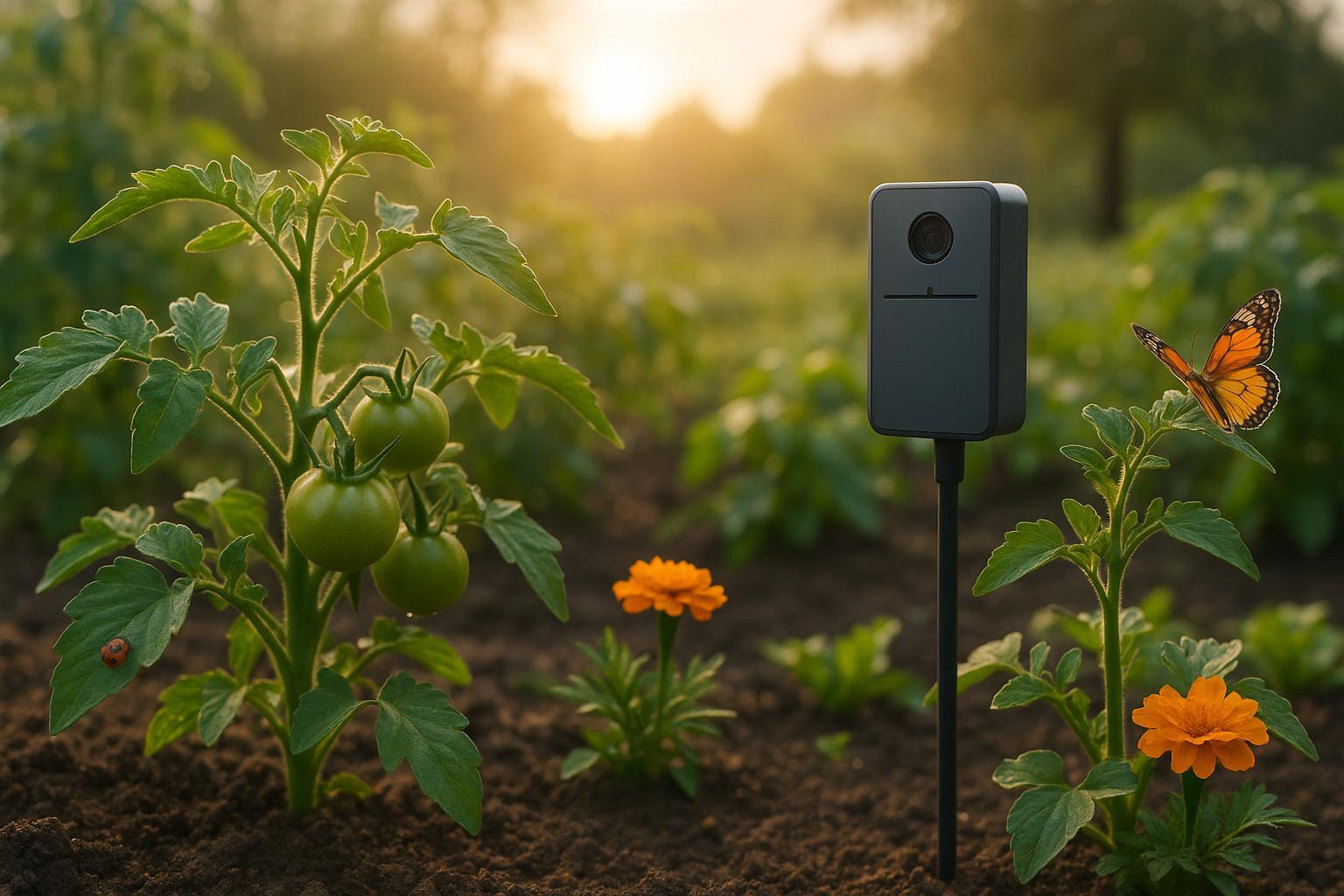
AI Pest Control: How Algorithms Detect Threats
Explore how AI is transforming pest control through early detection, eco-friendly solutions, and accessible tools for all gardeners.
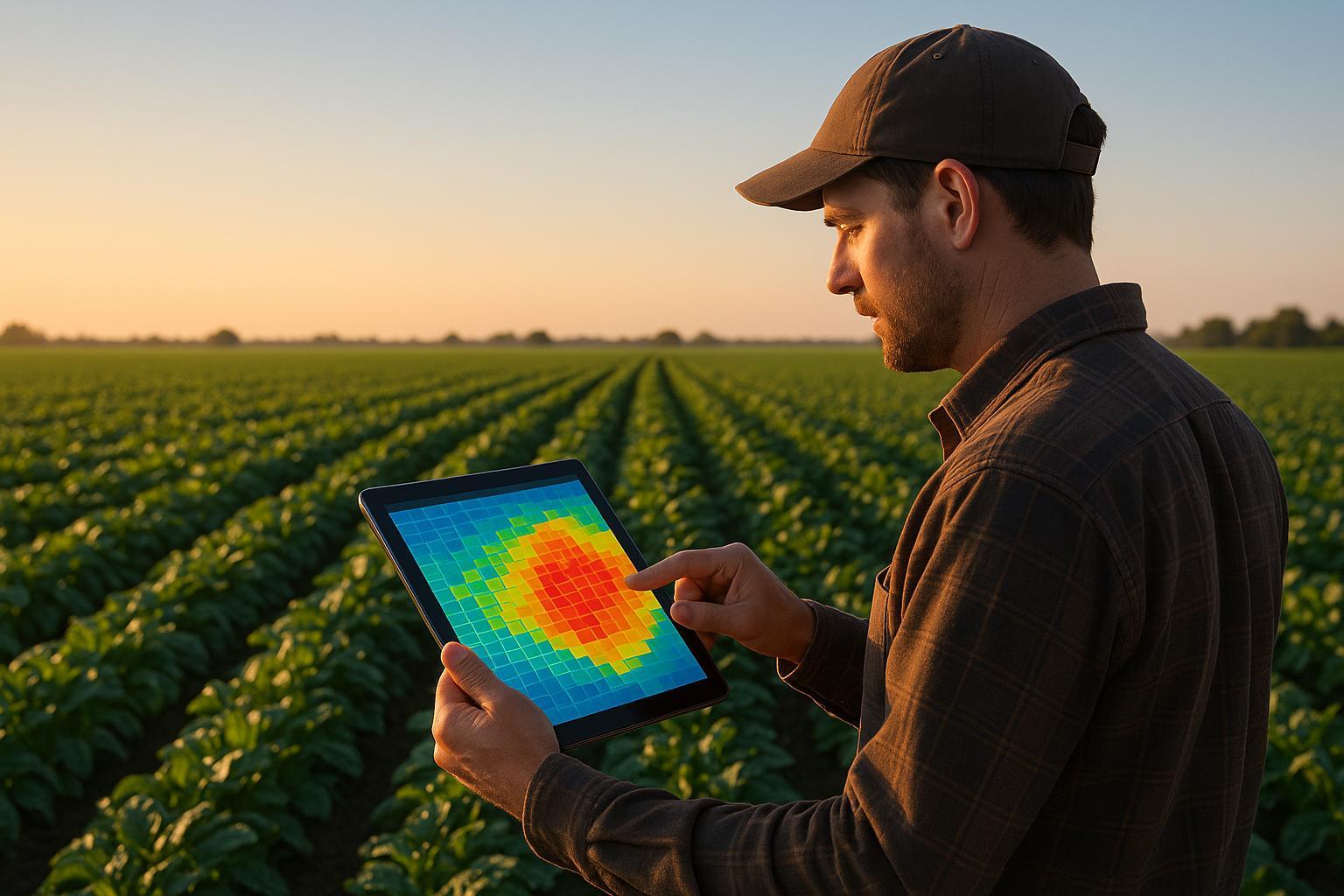
Growing Degree Days: AI's Role in Pest Control Timing
Explore how AI and Growing Degree Days enhance pest control timing, reducing pesticide use and increasing crop yields for sustainable agriculture.
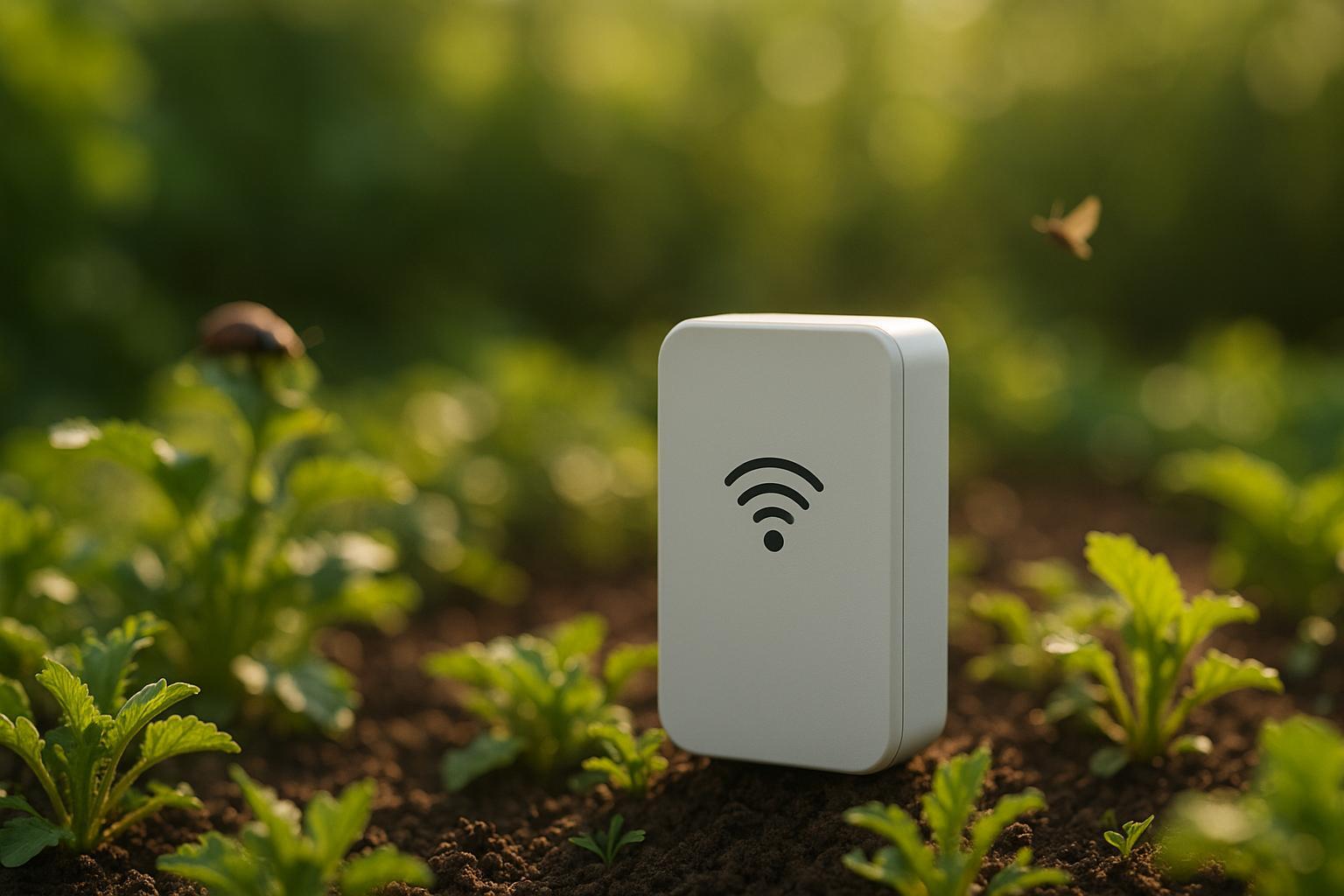
Ultimate Guide to Acoustic Pest Monitoring
Explore acoustic pest monitoring, a sound-based method that detects pests early, reduces pesticide use, and enhances garden management with AI.
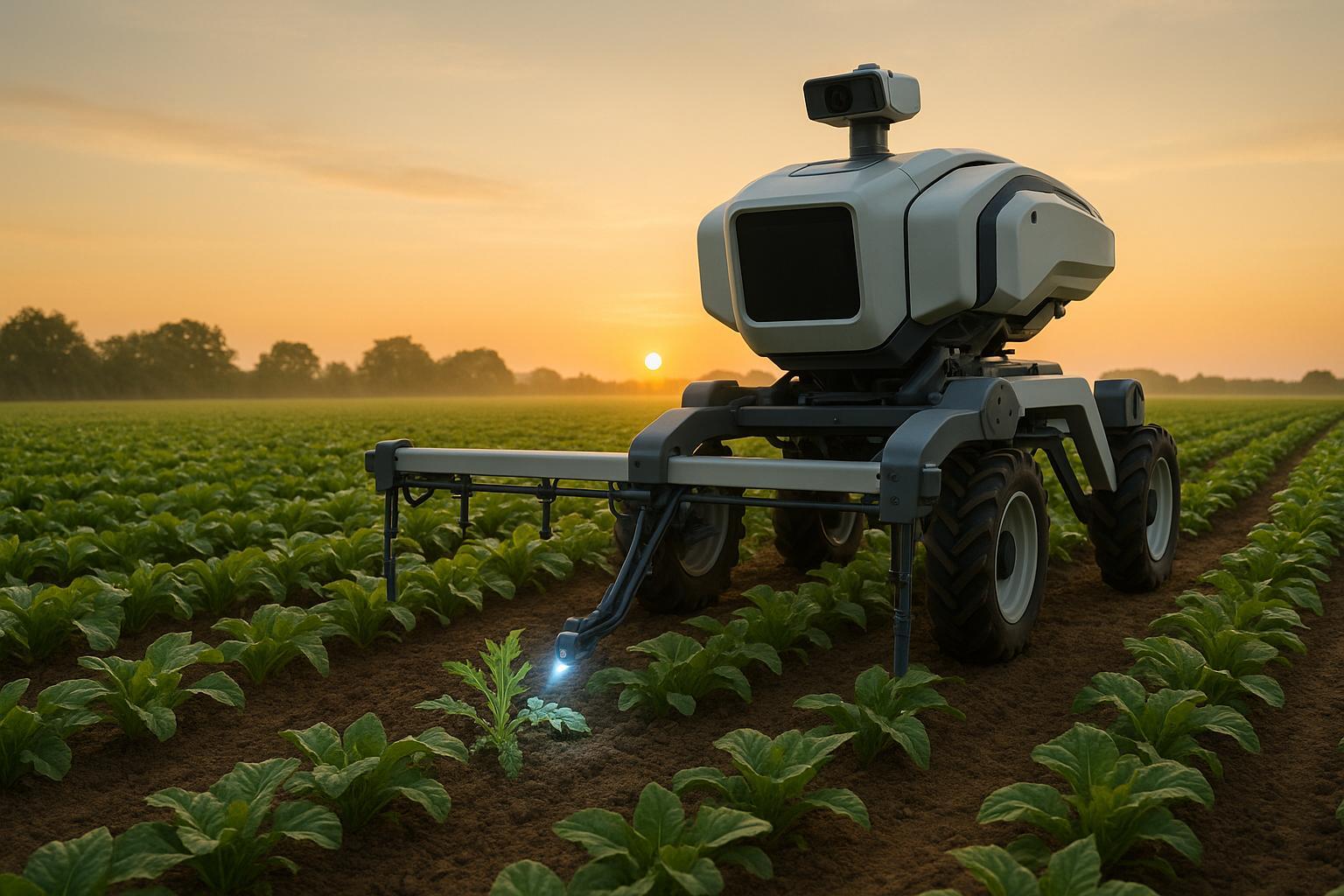
Designing Interfaces for AI Weed Control Systems
Explore how user-friendly design principles in AI weed control systems enhance efficiency, reduce costs, and transform modern agriculture.
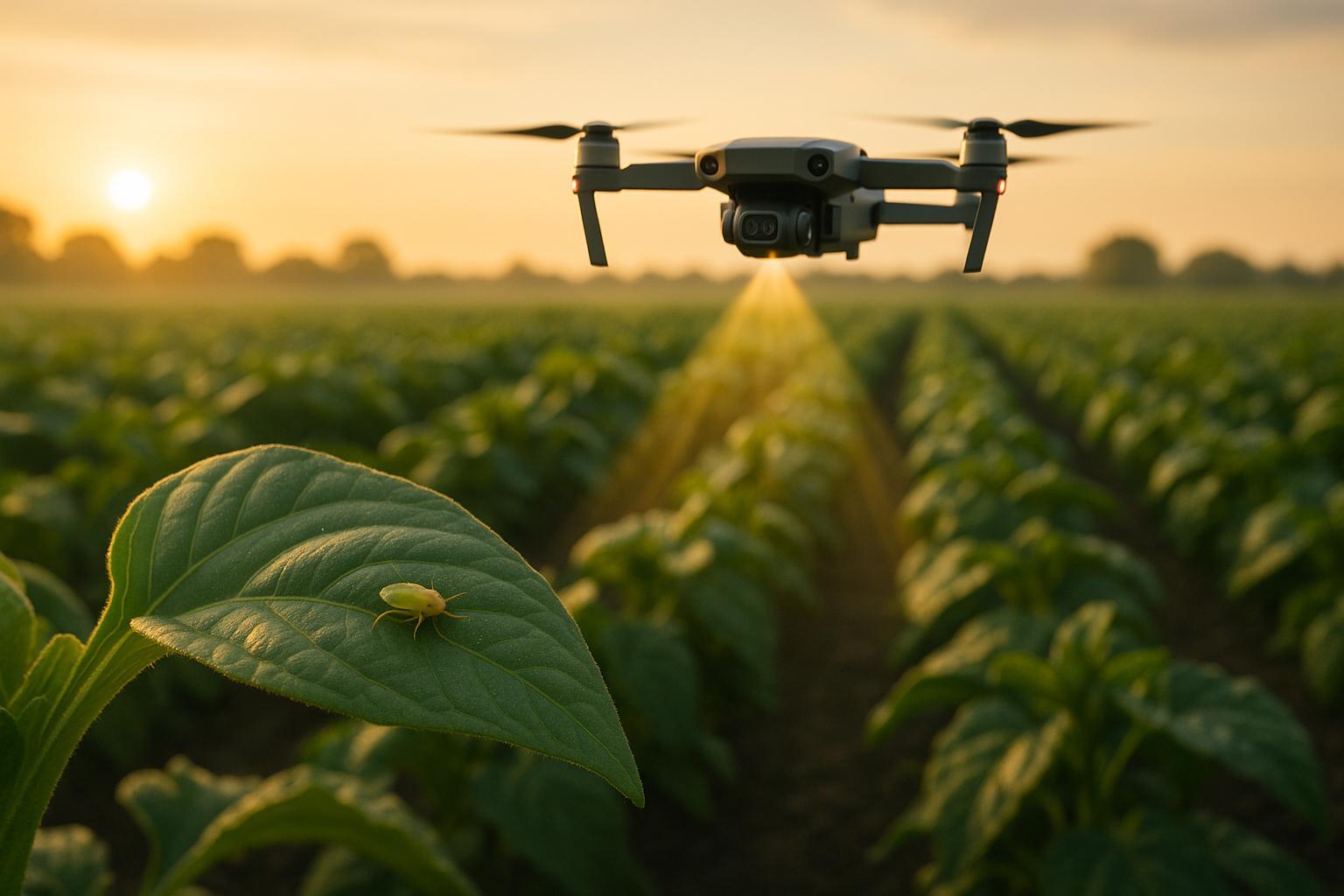
How Machine Learning Tracks Pest Behavior
Explore how machine learning revolutionizes pest management through early detection, precision treatment, and real-time monitoring, enhancing agricultural efficiency.

When to Plant Beets in Kentucky: A Comprehensive Guide
Discover the best time to plant beets in Kentucky to ensure a successful harvest. Learn about climate conditions, soil preparation, planting techniques, care tips, and harvesting methods.